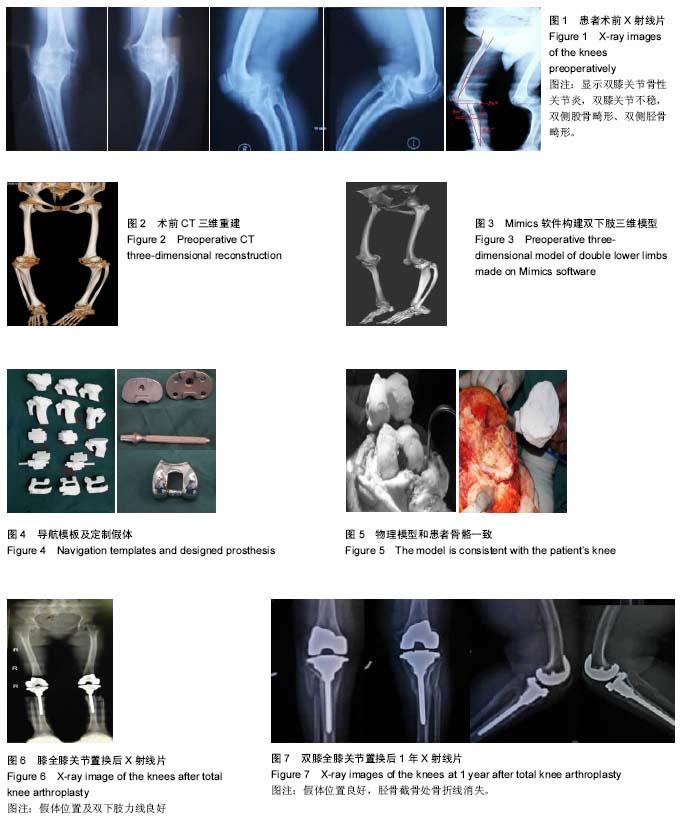| [1] 孙涛,高东强.基于CT图像的个性化人骨三维建模方法[J].机械设计与制造,2010,9:262-263.[2] Posey KL,Veerisetty AC,Liu P,et al.An inducible cartilage oligomeric matrix protein mouse model recapitulates human pseudoachondroplasia phenotype.Am J Pathol.2009;175(4): 1555-1563.[3] Posey KL,Alcorn JL,Hecht JT.Pseudoachondroplasia/ COMP -translating from the bench to the bedside. Gene. 2013;522(1):102-106. [4] McKeand J, Rotta J, Hecht JT.Natural History Study of Pseudoachondroplasia. Am J Med Genet. 1996;63(2): 406-410. [5] Cao LH,Wang LB,Wang SS,et al.Identification of novel and recurrent mutations in the calcium binding type III repeats of cartilage oligomeric matrix protein in patients with pseudoachondroplasia.Genet Mol Res.2011;10(2):955-963.[6] Li QW,Song HR,Mahajan RH,et al.Deformity Correction with External Fixator in Pseudoachondroplasia.Clin Orthop Relat Res.2007;454:174-179.[7] Posey KL,Coustry F,Veerisetty AC,et al.Chondrocyte- specific pathology during skeletal growth and therapeutics in a murine model of pseudoachondroplasia.J Bone Miner Res. 2014;29(5):1258-1268.[8] Kwang AJ,Lee SC,Ahn NK,et al.Delayed Femoral Fracture Through a Tracker Pin Site After Navigated Total Knee Arthroplasty.J Arthroplasty,2011;26(3):505.e9-505.e11.[9] Rengier F,Mehndiratta A,von Tengg-Kobligk H,et a1.3D printing based on imaging data:review of medical applications.Int J Computer Assist Radiol Sur. 2010;5(4): 335-341.[10] Schubert C,van Langeveld MC,Donoso LA.Innovations in 3D printing: a 3D overview from optics to organs.Br J Ophthalmol.2014;98(2):159-161.[11] 魏学磊,董福慧.计算机辅助成型技术制备骨组织工程支架的研究进展[J].中国修复重建外科杂志,2011,25(12):l508-1512.[12] 李轩,莫红,李双双,等.3D打印技术过程控制问题研究进展[J].自动化学报,2016, 7(42):983-999.[13] Hueson C,Tansey A,O’Donnchadha B,et al.Rapid prototyping in the assessment,classification and preoperative planning of acrtabular fractures. Injury.2007; 38(10):1158-1162.[14] Fasel JH,Aguiar D,Kiss-Bodolay D,et al.Adapting anatomy teaching to surgical trends: a combination of classical dissection, medical imaging, and 3D-printing technologies.Surg Radiol Anat.2016;38(3):361-367.[15] Khaled SA,Burley JC,Alexander MR,et al.3D printing of tablets containing multiple drugs with defined release profiles.Int J Pharm.2015;494(2):643-650.[16] 宋长辉,杨永强,张曼慧,等.基于数字化3D技术的股骨假体再设计与激光选区熔化制造[J].光学精密工程,2014,22(8): 2117-2126.[17] Qiao F,Li D,Jin Z,et a1.Application of 3D printed customized external fixator in fracture reduction. Injury. 2015;46(6):1150-1155.[18] Inzana JA,Olvera D,Fuller SM,et al.3D printing of composite calcium phosphate and collagen scaffolds for bone regeneration.Biomaterials.2014;35(13):4026 -4034. [19] Fedorovich NE,Alblas J,Hennink WE,et al.Organ printing:the future of bone regeneration?.Trends Biotechnol. 2011;29(12):601-606.[20] 周伟民,闵国全,李小丽.3D打印医学[J].组织工程与重建外科杂志,2014,10(1):1-3.[21] Tam MD,Laycock SD,Bell D,et al.3-D printout of a DICOM file to aid surgical planning in a 6 year old patient with a large scapular osteochondroma complicating congenital diaphyseal aclasia.J Radiol Case Rep.2012;6(1):31-37.[22] Bagaria V,Deshpande S,Rasalkar DD,et al.Use of rapid prototyping and three-dimensional reconstruction modeling in the management of complex fractures.Eur J Radiol. 2011;80(3):814-820.[23] Tricot M,Duy KT,Docquier PL.3D-corrective osteotomy using surgical guides for posttraumatic distal humeral deformity.Acta Orthop Belg.2012;78(4):538-542.[24] 杜浩,赵致良,干阜生,等.三维重建结合快速成形术制作模板定位髋臼假体的临床应用[J].中国矫形外科杂志,2009,17(10): 737-740.[25] Deschamps G,Khiami F,Catonne Y,et al.Total knee arthroplasty for osteoarthritis secondary to extra-articular malunions.Orthop Traumatol Surg Res.2010;96(8): 849-855.[26] Wang JW,Wang CJ.Total knee arthroplasty for arthritis of the knee with extra-articular deformity.J Bone Joint Surg Am.2002;84(10):1769-1774.[27] Wolff AM,Hungerford DS,Pepe CL.The effect of extraarticular varus and valgus deformity on total knee arthroplasty.Clin Orthop Relat Res.1991;(271):35-51.[28] Koenig JH,Maheshwari AV,Ranawat AS,et al.Extra-articular deformity is always correctable intra-articularly:in the affirmative.Orthopedics.2009;32(9):676-678. [29] 戴尅戎,倪诚,王成焘,等.定制型膝肿瘤假体的设计与临床应用[J].中华骨科杂志,2003,23(10):606-610.[30] 陈国仙,李国山,林宗锦,等.3-D打印技术辅助胫骨高位截骨术治疗膝内翻畸形骨关节炎的疗效观察[J].中国修复重建外科杂志,2016,30(4):407-410.[31] WarmanML,Cormier-Daire Hall C,et a1.Nosology and classification of genetic skeletal disorders:2010 revision.Am J Med GenetA.2011;155A(5):943-968. |
.jpg)

.jpg)